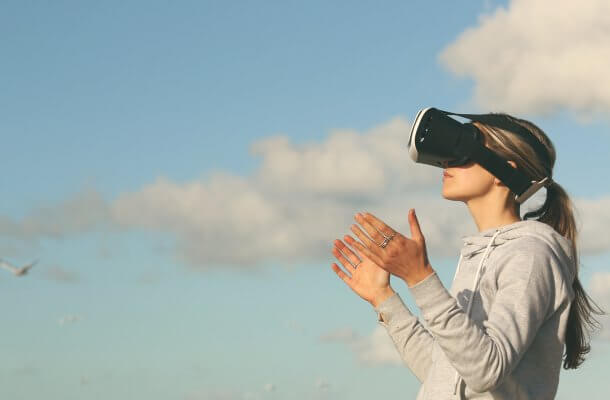09.03.2017 by Anete Ezera
The data visualization landscape is constantly in flux, shifting under the pressure of new technologies, big data, and political climates. As we move further into 2017, we’d like to take a look at how visualizations may evolve and change over the next year.
We spoke to multiple well-respected speakers, analysts, writers, and journalists in the field of data visualization to get their take on the biggest trends of 2017:
1) Social First Data Visualizations
RJ Andrews from Info We Trust is hoping to see more data storytelling created with social media in mind first. “It’s almost like content stumbles onto social right now,” he explained, “it is something that has yet to be figured out in a compelling way, but the community is slowly becoming aware. Social can mean a lot of things – looping animations, GIFs, YouTube shorts – these are formats dataviz is slowly breaking into.”
It looks like RJ isn’t alone. UX designer and data enthusiast Catherine Madden hopes to see more ‘snackable’ visualization content in 2017. “I want to see something that can be consumed on an Instagram feed that might hook someone into learning more that is also easy to share,” she said.
One great example of a woman already putting this into action would be Mona Chalabi, Data Editor at Guardian US. With more than 12k followers, her Instagram page is a must-see.
Newsrooms are also trying to stay ahead of new social technologies. Chiqui Esteban, Deputy Graphics Director at The Washington Post, knows it’s important to provide content where your audience will be available to consume it. “At The Post, we’re trying to be present where the people are, whether that’s desktop, mobile, Snapchat, video or print. If we find people are consuming information in new ways, we’ll fight to be there, wherever it is,” said Esteban.
2) Big Data Becomes Approachable
2016 was a huge year for big data, with more organizations collecting, processing, and analyzing data sets of all forms and sizes. We expect to see more systems that support large volumes of data in 2017, and even easier ways for end users to extract value from the numbers.
Tiago Veloso from Visualoop explains: “We are witnessing a rapidly evolving landscape in the Business Intelligence market, and interesting innovations in areas such as behavioral and predictive analytics. Overall, we can say that ‘Big Data’ is in the midst of a transition to ‘Complex Data,’ and that means visualization will play an increasingly key role in transforming all this information into actionable insights.”
3) Push for Accuracy and Truth
One huge underlying theme we kept hearing from our experts in regards to data visualization this year was truth. Towards the end of 2016 data literacy went from nice-to-have to a must-have.
Consultant and speaker Bill Shander would like to see an increased focus on facts. “Being truthful and clear with data has always been at the core of the visualization field,” he said. “But this year, with the cacophony about ‘fake news’ and political speech (and references to statistics) being more hyperbolic and less factual than usual, the focus is increasing. There has recently been an endless stream of commentary on truth in data that I think will dominate the conversation for quite a while.”
Data visualization instructor Rick Scavetta selected three trends he hopes to see carry more weight in the near future:
- Connections – More personal and personable for the audience
- Truths – More accountability and transparency in data sources
- Honesty – More understanding and authenticity in communication
4) Fresh Natural Color
For the past 16 years, Pantone has released a color that embodies deeper societal trends, forecasting and influencing visual and design trends for the year ahead. Their pick for Color of the Year 2017? Greenery 15-0343.

The zesty natural color is supposed to evoke feelings of new beginnings, freshness, and environmentalism. According to Digital Arts, you can also expect to see a rise in deep hues like khaki, olive green, red brick, maroon, and charcoal grey.
5) Storytelling and Narrative Still Going Strong
Narrative is more important than ever. The term ‘storytelling’ is not a buzzword, it’s just gotten a bad reputation. Catherine Madden explains: “Storytelling and narrative are totally real, but I just think they have lost some meaning thanks to overuse. A word I’ve started to use a bit more is ‘packaging.’ I think that people are starting to realize that the data and subsequent visualizations can’t just speak for themselves, and you need to figure out how to wrap it up and what else to include for it to truly inspire action.”
Storytelling With Data’s Cole Nussbaumer Knaflic definitely expects to see a continued emphasis on storytelling. “We’re faced with more and more data every day. No longer is it enough to ‘show’ the data—to have an impact, we need to turn the data into information and consider our audience and what will resonate with them in order to motivate them to action,” she explained. “My view is that we should never simply show data, rather we should make data a pivotal point in an overarching story.”
6) Implement Your Tech Stack
2016 experienced a surge in tech tools for marketers, teachers, journalists, and business professionals. The key for 2017? Mastery of these visual tools. There are dozens of data visualization tools on the market, but this year every business is going to want to start using them unless they want to get left behind.
Top business blogger Jeff Barrett thinks this is the year we finally make use of our tech stack. “In 2016 savvy marketers began to find quick tools for visuals. Canva for quick design. Infogram for making charts and graphs sexy again. But 2016 was more discovery. 2017 is implementation. These tools are being incorporated in to entire departments to create templates, save time and help businesses make better presentations,” said Barrett.
7) Virtual Reality Visualizations
Virtual reality has the ability to revolutionize data visualization, especially when it comes to big data. There is only so much data the human eye can take in when viewing a visual in two-dimensions. Imagine what our brains would be able to take in when placed in an immersive, digitally created space with a 360-degree field of vision?
Click here to view 8 immersive virtual reality data visualizations.

8) Data Journalism Hones in on Visualization
Every year we see incredible visualizations from top newsrooms around the globe. According to Visualoop’s Tiago Veloso, 2017 will be no exception.
“This year – and the years to follow – I believe we’ll continue to see the intense use of visualization for news reporting and storytelling purposes, especially from the graphics desks in the top US newsrooms like The New York Times and The Washington Post, as well as from online news organizations such as ProPublica. This is much needed in times of global political and social turmoil, and alternative facts,” he said.
For Chiqui Esteban from The Washington Post, it’s about finding the perfect blend between interactivity, static images, and the pulse of the story. “For us at The Post, we reach a broad audience, so we will be more visual when the story requires, or take a more explanatory approach in different cases,” he explained.
We hope these ideas sparked your creativity and inspiration. Feel free to share your thoughts about the latest dataviz trends with us on Twitter and Facebook, and make sure to sign up for the Infogram email newsletter!
Get data visualization tips every week:
New features, special offers, and exciting news about the world of data visualization.